How to Run a Boat in Following Seas
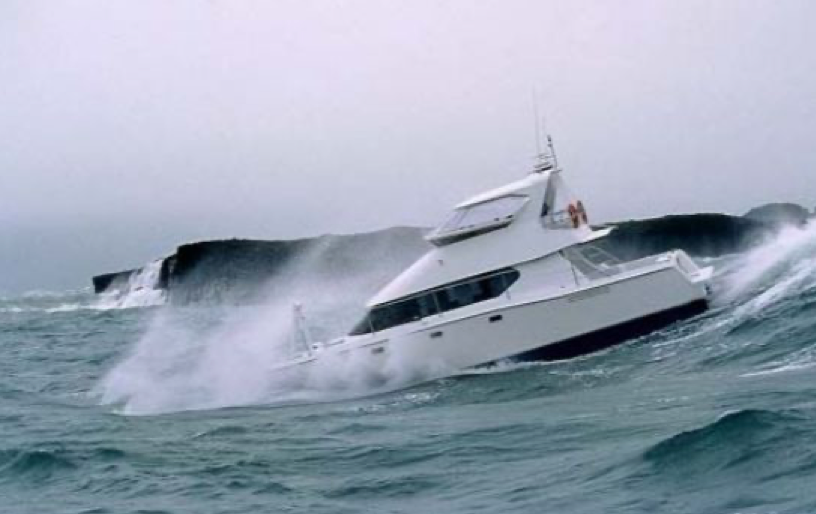
One of the worst spots to be in as a boater is riding down a wave, losing steering and starting to see the stern swing out. Boaters may not have a choice but to run in following seas returning from an offshore excursion. Here’s a few tips on how to ride the waves safely back to shore.
There are few activities where conditions can change as rapidly as boating in the ocean. Whether it’s a fog patch that rolls in or strong winds that kick up the swells, mariners must be prepared for anything that will come their way.
The last thing a boater wants is stuck riding down a wave, potentially losing steerage and the stern starts to swing out. The United States Coast Guard Auxiliary offers tips for running a boat in following seas and how mariners can avoid putting themselves into a hazardous position.
Following Seas
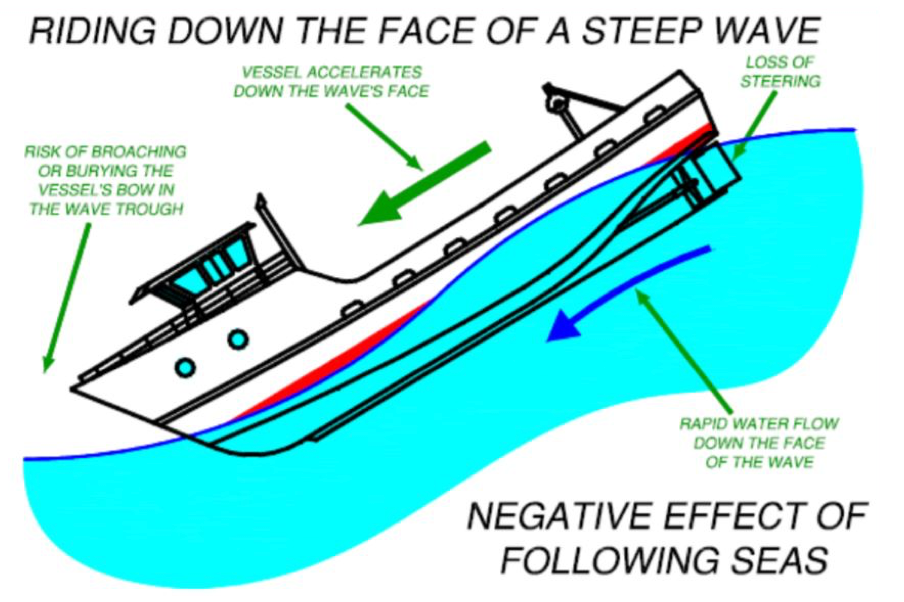
Running in following seas isn’t optimal but sometimes mariners have little choice. Whether it’s going into an inlet or returning from an offshore excursion, boaters should exercise additional caution because of these potential hazards:
- Riding down the face of a steep wave can lead to sudden capsizing of the vessel
- If the vessel surfs and accelerates down the wave there is a chance of burying the bow
- Because the natural flow of the water in the wave is in the same direction as the vessel the rudder may lose effectiveness
Crest of a Steep Wave
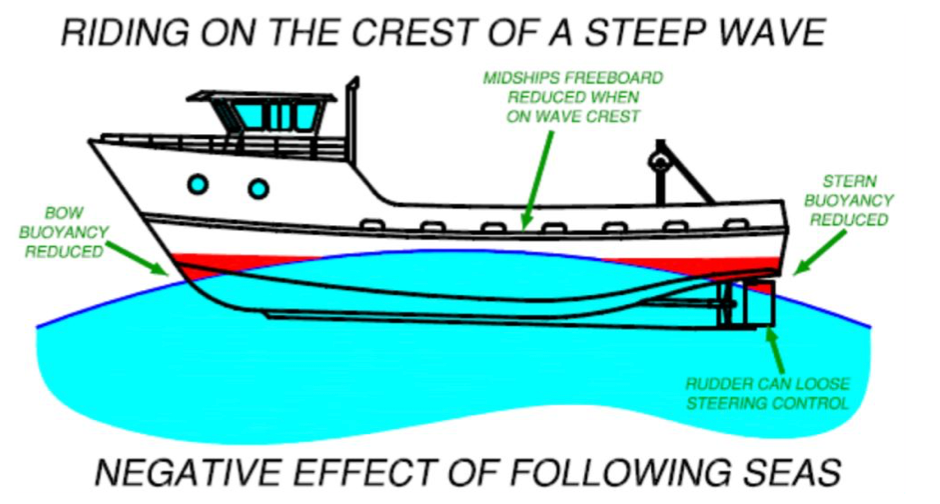
Sitting on top of a steep swell can be a precarious position. The horizon looks a drop on a roller coaster and the boat’s handling feels like a car hydroplaning on the highway. Boaters want to avoid riding over waves because:
- Critical stability provided by the stern is severely reduced when the stern is lifted clear of the water and no longer provides any righting forces.
- Reduction in the vessel’s amidships freeboard further reduces the overall stability levels and may lead to direct capsize of the vessel.
To prevent this from happening, adjust the boat speed ahead of the next swell or wave to stay between sets. The captain will have to frequently change speeds as swell patterns will vary.
Trough of a Steep Wave
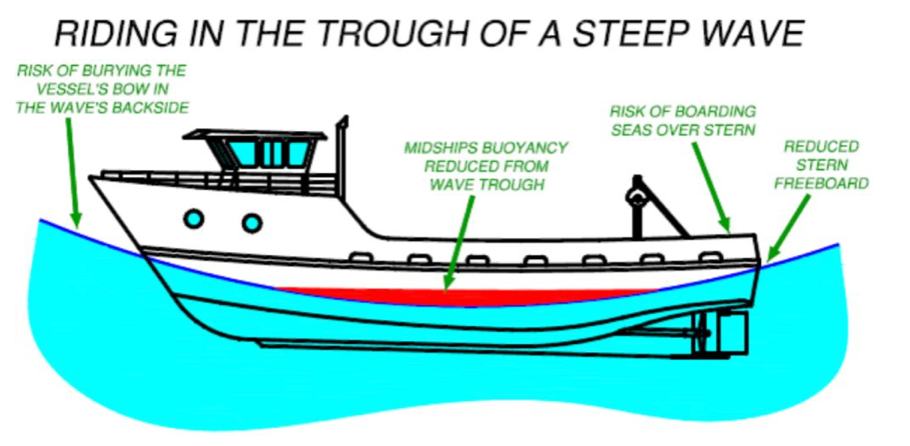
Running in the trough of steep wave creates its own hazards, which is why the practice should be minimized. The captain risks burying the vessel’s bow in the wave’s backside or because of reduced stern freeboard, the boat could potentially see board seas over the stern. Additionally, riding in the trough of a steep wave can:
- Increased the chance of being swamped by a boarding wave.
- The added weight of the water on deck raises the vessel’s center of gravity and creates a sizeable free surface capsizing moment.
Changing Courses
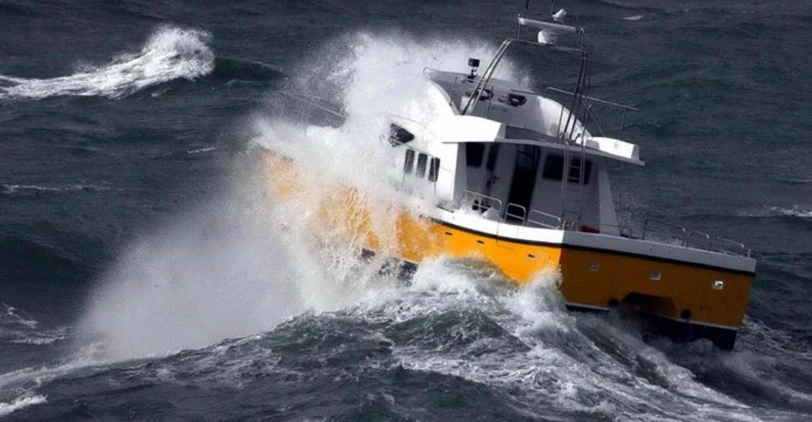
Sometimes running in a head sea simply isn’t an option and the captain has no choice but to run in following seas. The boat operator should adjust the engine’s trim and tabs (if the boat has them) to keep the bow up so it doesn’t stuff into a wave.
The Coast Guard Auxiliary recommendations include:
- In severe sea conditions change course to put the bow into the seas.
- If the vessel must run with the seas, riding on the backside of the preceding wave minimizes the dangers.
- Do not overload the vessel.
- Keep cargo secured at all times.
Preventive Measures
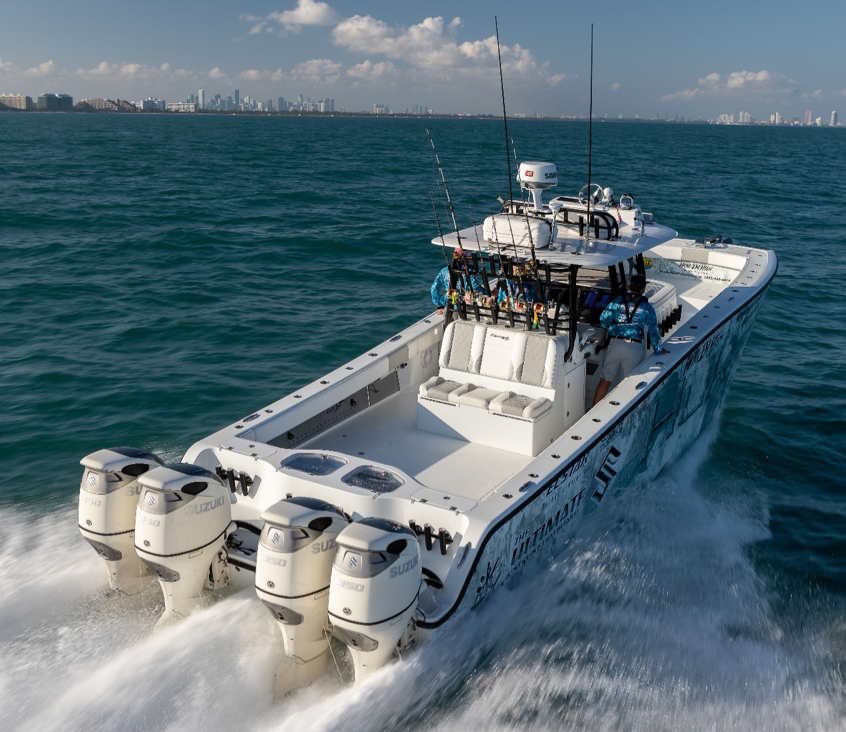
Thanks to today’s weather forecasting technology and onboard electronics, predicting the weather has never been easier. That still doesn’t guarantee that you won’t hit inclement weather, especially boating in the ocean.
Boaters can prepare for those big seas at shore or before they leave their favorite fishing ground. Among the preparations a boater should take:
- Minimize the number of partially filled tanks to decrease free surface effects.
- Keep all bilges, compartments and spaces dry and free of standing water.
- Maintain your vessel’s watertight envelope.
Making a few small preparations can help assure a fun and safe day on the water.